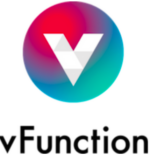
vFunction has released a number of new capabilities that are designed to help companies deal with the increased complexity that microservices bring.
“As enterprises push to innovate quickly, the complexity of microservices architectures often stands in the way,” Moti Rafalin, co-founder and CEO of vFunction, wrote in a blog post. “Without proper oversight, services multiply, dependencies emerge, and technical debt snowballs. This complexity can severely impact application resiliency, scalability, and developer experience.”
It is launching a number of new governance capabilities to help prevent microservices sprawl. Companies will be able to set rules that ensure microservices are calling authorized servers, enforce boundaries between services to prevent unwanted dependencies, and maintain the right relationships with databases.
“With these rules in place, teams can ensure their architecture evolves in a controlled manner, minimizing risk and avoiding architectural drift—a common problem when services deviate from original design principles,” Rafalin explained.
The company also announced new flow analysis capabilities, including flow coverage for monoliths and sequence diagrams for microservices.
Flow coverage continuously monitors production usage to provide insights into user behavior and gaps in test coverage.
Sequence diagrams show the flow of an application, and can highlight bottlenecks before they impact performance. For instance, excessive hops or complex service interactions may result in latency, inefficiency, and increased opportunity for failure, so vFunction will point out areas where three or more hops are occuring.
According to vFunction, visualizing these problems can help teams more easily link architectural issues with the incidents they cause.
“vFunction’s new capabilities provide the insights and controls engineering leaders need to guide their teams, address and avoid technical debt, and ensure their systems remain scalable and resilient,” Rafalin concluded.






